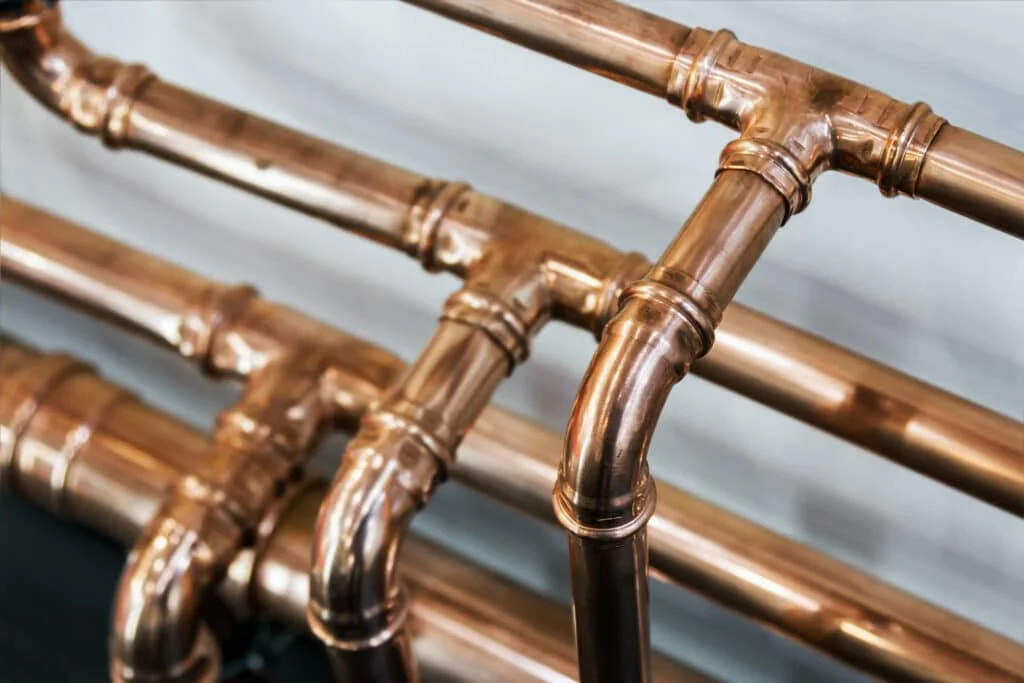
When purchasing new pipes for your plumbing project, there are various options available to you. Selecting the ideal type depends on its purpose and location.
Copper pipes are a timeless option that are both easily maintained and corrosion-proof, making them the go-to solution for many home plumbing installations.
PEX Pipe
PEX piping is versatile, durable, and simple to install, featuring flexible yet sturdy material that’s available in coils up to 500 feet long for manifold systems. Color coded pipes make identification quick and simple!
PEX tubing is more cost-effective and resistant to corrosion than copper or galvanized steel pipes, plus easier to maintain due to reduced leaks, cracks and minor damages that require repair than with those materials.
PEX pipes are easier to install than metal ones; plumbers can quickly connect PEX using push-fit fittings that “grab” onto it like those paper tube traps you played with as a child, with no soldering necessary – saving labor costs during home remodels as well as maintenance fees over time. PEX also makes for safer living conditions in freezing regions due to being expandable and bendable without breaking.
Copper Pipe
Copper pipes are extremely long-lasting and capable of withstanding extreme amounts of pressure, making them relatively low maintenance costs. Unfortunately, however, you could experience issues due to corrosion-laden water or high levels of chlorine exposure.
Homeowners commonly opt for copper DWV (drain, waste and vent) pipe in their main lines within their home. It comes in both flexible and rigid tubing formats and features red markings to identify it as such. Although not intended for underground applications such as outdoor plumbing systems, DWV pipe can still make for excellent repairs and replacements in indoor plumbing applications.
Rigid copper is easily cut using a hacksaw and joined using solder or sweat connections, while it bends around corners without needing elbow fittings, making installation in tight spaces much simpler.
ABS Pipe
Though all plumbing pipes may appear equal, each variety differs significantly in material composition and performance. Knowing what makes your chosen pipes tick can make all the difference in keeping your home’s plumbing system in good working order.
ABS plastic pipe is an economical choice that’s suitable for underground sewer runs or fixture drains, as well as indoor use; however, its not as quiet than PVC and will transmit sound of running water through it. Furthermore, its weak sunlight resistance means it could warp if exposed to heat sources directly.
ABS’ main advantage over PVC is its one-step joining process using special cement, while PVC requires first applying a purple primer before being cemented together. ABS also performs better in cold weather environments due to being more temperature resistant.
Polybutylene Pipe
Polybutylene pipes were an extremely cost-effective and simple choice of construction material in Sunbelt construction from the 1970’s through mid 1990’s due to their affordability and installation ease, but research has demonstrated their susceptibility to degradation and internal scaling, leading to water leaks causing substantial property damage.
Replacing old PEX and PVC systems with modern versions is important to protecting the home against water damage as well as increasing hot water flow and improving pressure throughout. New systems will not only prevent further issues but will also help ensure better hot water distribution in your house.
PEX plumbing pipe coils are particularly advantageous because of their ability to be bent around corners and other obstacles in your home for easier installation than copper or PVC. Furthermore, their lighter weight makes them easier to transport and handle during installation.








